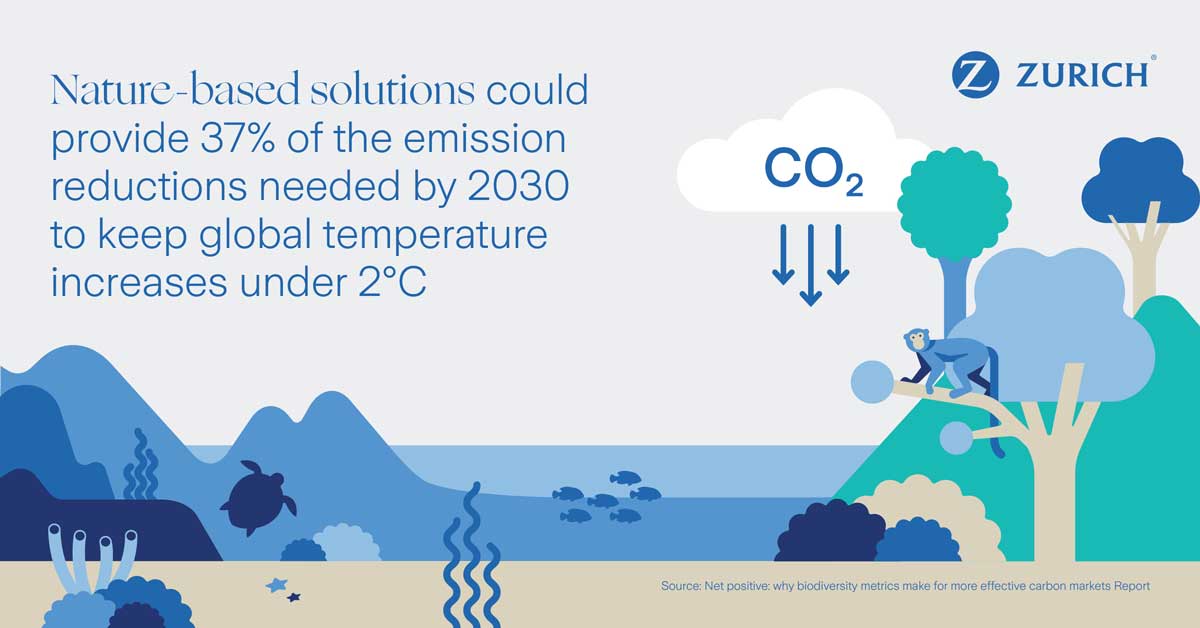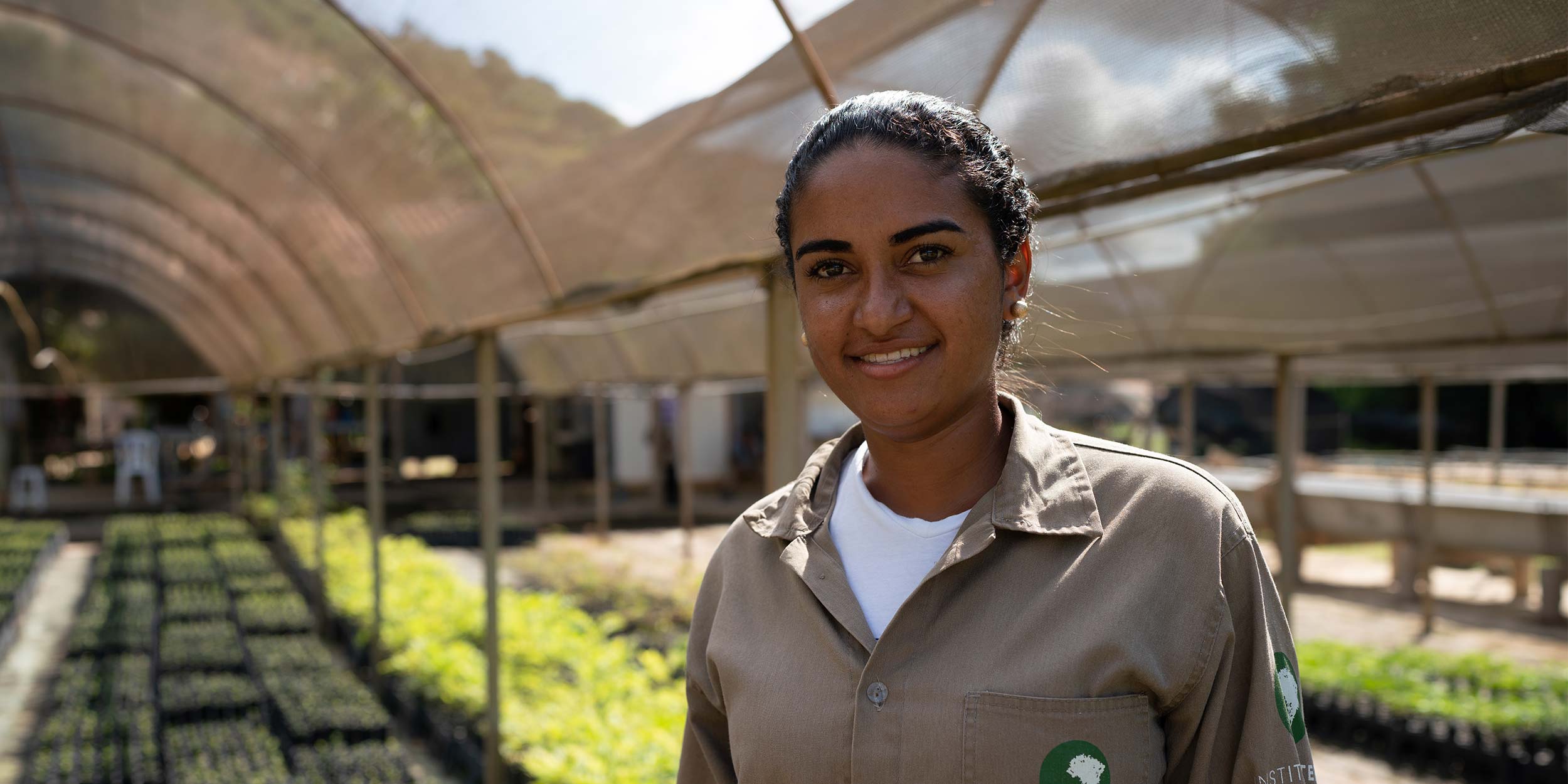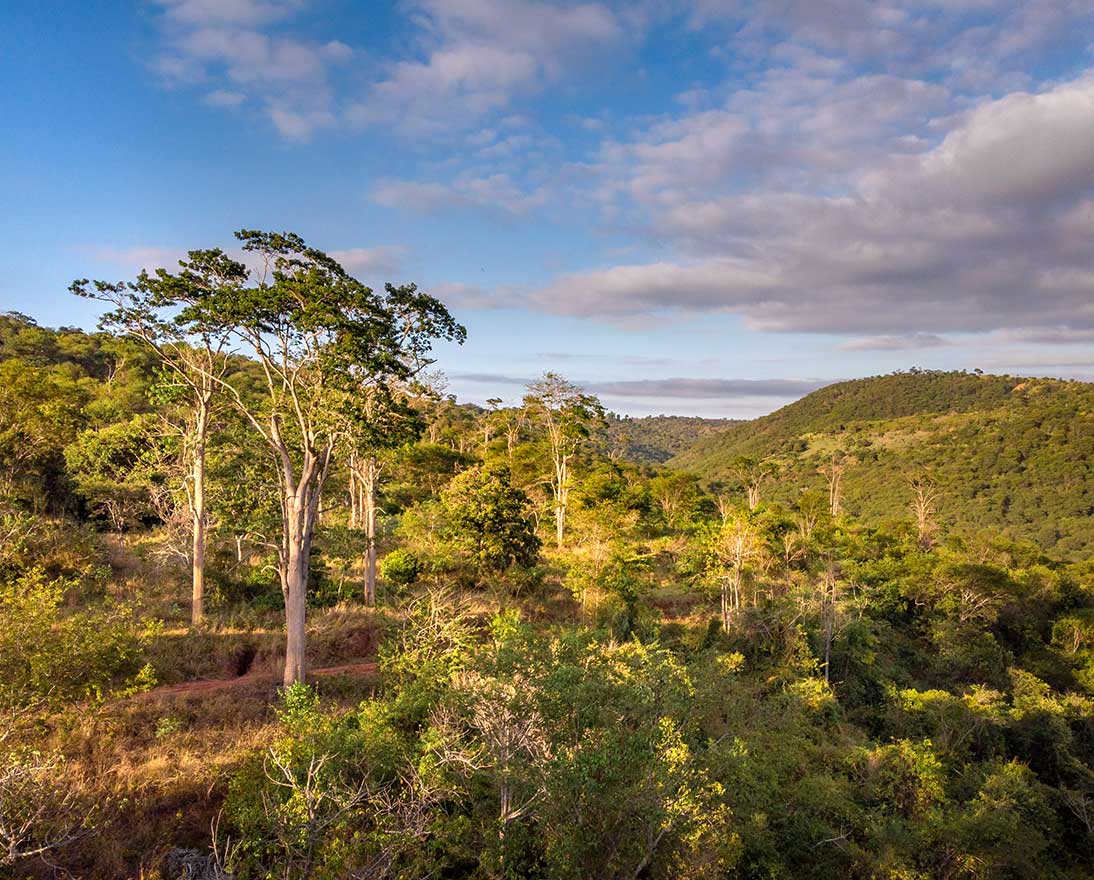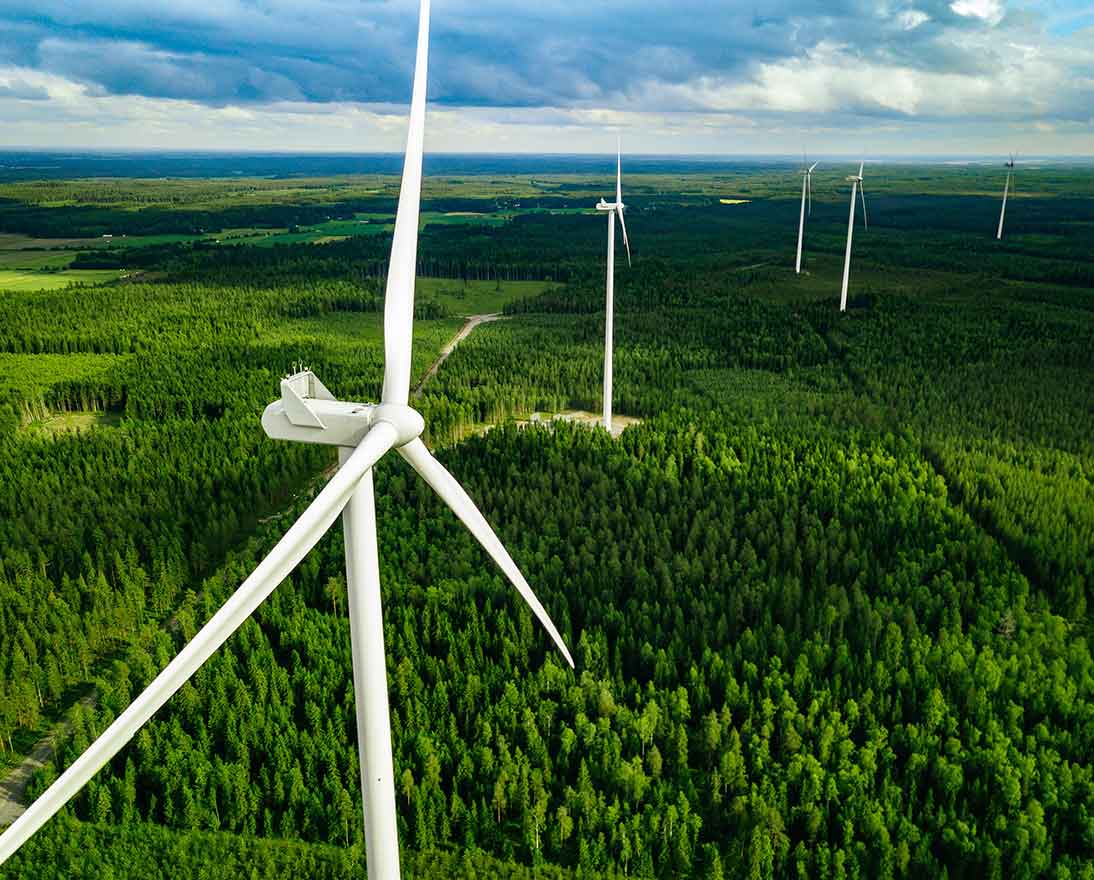Net positive: why biodiversity metrics make for more effective carbon markets
Climate resilienceReportOctober 18, 20223 min read
A globally agreed indicator of the impacts of carbon projects on natural ecosystems could transform the voluntary carbon market to drive positive change for biodiversity, as well as for climate change.
Zurich is calling for governments, businesses, scientists, and NGOs to step up collaboration on fast-tracking the development of such an indicator.
Natural climate solutions
In addition to the important steps being taken to decarbonize our economics, there is growing recognition of the potential to support climate change mitigation efforts by conserving and rehabilitating natural ecosystems. Many terrestrial and marine ecosystems – from forests to peatlands, mangroves and oceans – are natural carbon sinks. By some estimates, the optimal deployment of nature-based solutions could provide up to 37% of the reduction in emissions required by 2030 to keep global temperature increases under the 2°C target.
Healthy ecosystems offer a range of other benefits alongside climate change mitigation. These include strengthening capacity to adapt to climate change, as natural ecosystems tend to be more resilient to shocks such as extreme weather events; enhancing food security, which relies heavily on biodiversity; and boosting economic growth, from creating jobs to providing “ecosystem services” such as improved air quality and clean water.

Because of these additional impacts, natural climate solutions that protect ecosystems can deliver broad benefits to society and the economy. However, some poorly designed carbon projects – such as planting monocultures of fast-growing commercial timber species – can undermine the health of ecosystems, compromising their wider benefits and ultimately also undermining their capacity to absorb carbon.
The voluntary carbon market
The voluntary carbon market is growing rapidly: by some estimates it could increase by a factor of 15 by 2030. And within this market, demand for high quality carbon credits generated from nature is also growing.
However, high quality, well-designed nature-based projects that do a good job of protecting biodiversity tend to be more expensive than those which focus narrowly on short-term carbon impacts. For example, growing a healthy forest that contains a variety of tree species is more complex than simply planting a monoculture. If investors are to justify the additional cost of quality carbon projects that enhance biodiversity, they need to be able to credibly demonstrate the additional impact.

The voluntary carbon market is moving towards greater transparency on the impacts of projects – including their wider impacts on nature and local communities, as well as on carbon. But there remains a need for a metric that can allow for direct comparison of projects to support buyers in selecting higher quality carbon credits, and potentially also be integrated into reporting and disclosure frameworks.
Towards a single metric
Developing a single metric to characterize biodiversity is a challenge.
There is no shortage of environmental data – what is lacking is a unified approach to harnessing that data into a holistic quantification of biodiversity and how it is changing over time. The value of ecosystems lies in their overall web of interactions, but current metrics tend to focus on narrow aspects of diversity – such as the number of species – which give only a limited picture.
New approaches are being developed that offer the potential to monitor ecosystems more holistically, by combining technologies such as satellite imagery, genetic analysis, digital systems and machine learning. The SEED Biocomplexity Index being led by Crowther Lab at ETH Zurich is one leading example.



